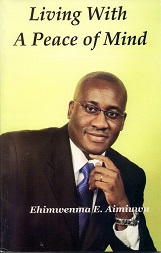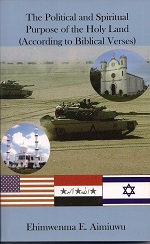 |
|
The State Societies.
One is uncertain about the process of change from
stateless to state societies in traditional Nigeria. One is uncertain about why
nations within the same Sudanic agrarian civilization are at different levels
of political development. The co-existence of several political cultures in traditional
Nigeria, is nevertheless, a testimony to the variety of political imagination
which exists therein. While the Ibo and the Tiv typify indigenous democracies,
Edo, Oyo, Zazzau
exemplify indigenous states.
The Edo Society.
For a number of reasons the Edo were a distinguished
group in indigenous Nigeria. Numbering about one million, they are one of the
major nationalities in Africa. Their complex political culture apart, the Edo
possess a remarkable culture whose beauty and creativity continue to marvel
and inspire modern artists the world over. The Edo are divided into groups.
They
include the primary Edo who inhabit the Benin province and speak Edo proper,
Ishan, Isoko, the iviosakon, Akoko-Edo, Urhobo and Etsako. These latter Edo-related groups have their
own dialects that is related to the Edo proper as well.
The Edo society is a differentiated one. The first
type of differentiation is status and rank-ordering by age. Dominating the Edo
rural scene in particular, the age-groups are three in number, namely: the youth
(iroghae), the middle-aged (ighele) and the elders (Odion). Membership in each
group, particularly
the Iroghae is by initiation and it lasts for many years. One moves up after
having mastered the functions and culture of his current group. The social functions
of the age-group reflect the Edo philosophy of personality development. To the
youths are assigned a physical role, the execution of public works. The middle
aged, combining strength and courage, are given the military assignment of defending
the realm. The elders, whose wisdom is symbolized by hoary heads and calm
faces, are
given the distinguished responsibility of decision-making. It is right to observe
here that the age-group are integrative forces among the Edo; their
integrative
power stemming from their inter-lineal form and their village-wide character.
|
|
The Political & Spiritual Purpose of the
Holy Land
 |
| |
|
The second type of social differentiation among
the Edo is along class lines. In this regard, the Edo society is divided into
three main classes-the royal class, the Chiefs or nobles and the people or
commoners. While
the first and third groups appear to possess internal homogeneity, the aristocracy
of Chiefs consists of three segmented units, the Uzama (the hereditary
chiefs), the Eghaevo Nogbe (The palace chiefs) and the Eghevonore (the town
chiefs), the latter
two being non-hereditary. The royal class has a variety roles to
perform, and
they include governmental, political, military and religious. The commoners,
the
main prop of Edo society having no specialized functions on the political
scene, bear
the mundane responsibilities for economic production.
The connection between rural sociology and rural
politics is a close one in Edo community. In villages military power is in the
hands of the ighele who supply the manpower. This, as far as is known is rarely
used to challenge the village elders and chiefs. The ighele, in consequence,
exercise
little or no power on decision-making for the village. Since the village
leadership
rotates in cycles of generations, the ighele patiently await their customary
turn to become the village elders.
The State Societies.
One is uncertain about the process of change from
stateless to state societies in traditional Nigeria. One is uncertain about why
nations within the same Sudanic agrarian civilization are at different levels
of political development. The co-existence of several political cultures in traditional
Nigeria, is nevertheless, a testimony to the variety of political imagination
which exists therein. While the Ibo and the Tiv typify indigenous democracies,
Edo, Oyo, Zazzau
exemplify indigenous states.
The Edo Society.
For a number of reasons the Edo were a distinguished
group in indigenous Nigeria. Numbering about one million, they are one of the
major nationalities in Africa. Their complex political culture apart, the Edo
possess a remarkable culture whose beauty and creativity continue to marvel
and inspire modern artists the world over. The Edo are divided into groups.
They
include the primary Edo who inhabit the Benin province and speak Edo proper,
Ishan, Isoko, the iviosakon, Akoko-Edo, Urhobo and Etsako. These latter Edo-related groups have their
own dialects that is related to the Edo proper as well.
The Edo society is a differentiated one. The first
type of differentiation is status and rank-ordering by age. Dominating the Edo
rural scene in particular, the age-groups are three in number, namely: the youth
(iroghae), the middle-aged (ighele) and the elders (Odion). Membership in each
group, particularly
the Iroghae is by initiation and it lasts for many years. One moves up after
having mastered the functions and culture of his current group. The social functions
of the age-group reflect the Edo philosophy of personality development. To the
youths are assigned a physical role, the execution of public works. The middle
aged, combining strength and courage, are given the military assignment of defending
the realm. The elders, whose wisdom is symbolized by hoary heads and calm
faces, are
given the distinguished responsibility of decision-making. It is right to observe
here that the age-group are integrative forces among the Edo; their
integrative
power stemming from their inter-lineal form and their village-wide character.
|
|
|
The second type of social differentiation among
the Edo is along class lines. In this regard, the Edo society is divided into
three main classes-the royal class, the Chiefs or nobles and the people or
commoners. While
the first and third groups appear to possess internal homogeneity, the aristocracy
of Chiefs consists of three segmented units, the Uzama (the hereditary
chiefs), the Eghaevo Nogbe (The palace chiefs) and the Eghevonore (the town
chiefs), the latter
two being non-hereditary. The royal class has a variety roles to
perform, and
they include governmental, political, military and religious. The commoners,
the
main prop of Edo society having no specialized functions on the political
scene, bear
the mundane responsibilities for economic production.
|

Nigeria: Cafeteria |
|
The connection between rural sociology and rural
politics is a close one in Edo community. In villages military power is in the
hands of the ighele who supply the manpower. This, as far as is known is rarely
used to challenge the village elders and chiefs. The ighele, in consequence,
exercise
little or no power on decision-making for the village. Since the village
leadership
rotates in cycles of generations, the ighele patiently await their customary
turn to become the village elders.
On the national level, the distribution of power
relative to the decision -making is not a simple affair in Edo land. In a culture
where the traditional masses are a truly silent majority, power is for all practical
purposes elite-centered. It is shared among the King ,the hereditary chiefs and
the non-hereditary chiefs, the Uzama, the Ezomo, the Military commander, is one of
the most influential men in Edo political system. Known traditionally to be a
loyalist, he is one of those constant favorites of the Edo king, and in consequence
a person who carries considerable weight in the council of state.
The town nobles, the Eghaevonore, are the institutional
representation of the people's power and the people's interest. Nineteen in
number, they
are led by four, pre-eminent chiefs who are known as the four pillars of Edo.
Among
these four, the Iyase, Prime minister, is recognized leader of the town
chiefs. Because
the group is populist in tension and vision, it is independent of the King.
Indeed, it
is designed as an institutional check upon Monarchial authority.
The royal class and the aristocracy constitute
the power elite in Edo land for a number of reasons. In the first place, it is
they who share in the main whatever common wealth there is to share. In the second
place, they are recognized and respected as influential leaders by the traditional
masses. In the third place, it is they who make decisions for Edo land. And the
council of state is the arena where they meet.
The council of state is composed of the Uzama,
the
Town and palace chiefs and the King who also is its chairman. Although the Edo
Monarch is supreme in constitutional theory, in practice he makes laws and decisions
with the aid of his council.
The Edo Monarch initiates the decision-making process
through his power of convocation of the state council. In the council, the tables
the various problems and issues facing his realm. Each of the council groups
then withdraws to a separate chamber of deliberation, each group takes position
and makes its decision-making process of Edo land. The town chiefs, with an amazing
determination and vigilance, struggle to protect the interest of the
commoners. And
the Iyase is the symbol of such determined vigilance. It is for this reason
that
he is seen as the traditional opposition to the king. In any event, the art of
reconciling the council view points, when they are divergent, is one in which
indigenous Kings are masters. The Edo Monarch shares in this ancient wisdom of
reconciliation.
Exerpts From a symposiun paper at the 4th national
Festival of Arts by Dr opeyemi Ola.
Culled from the Now defunct Nigeria Magazine of 1975 .
|
![]()